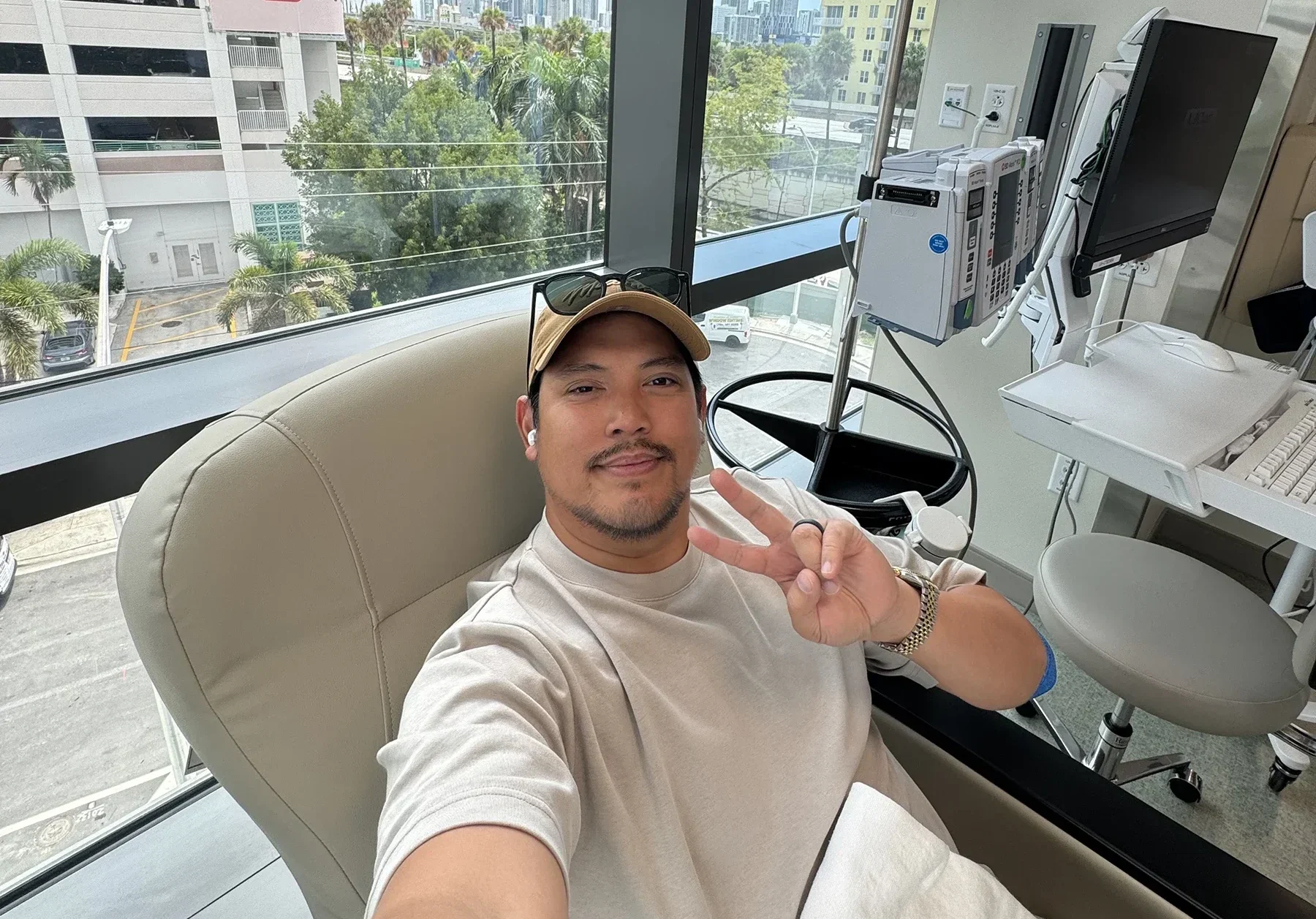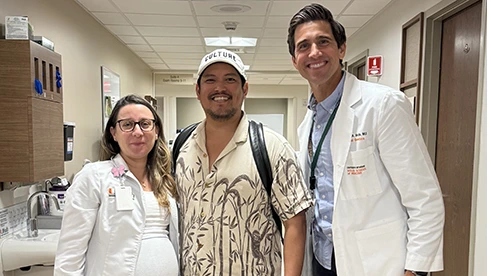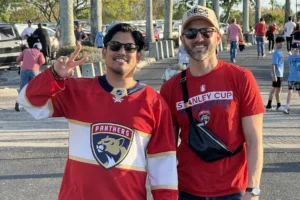A Lifesaving Case of Vertigo?

At first, Paul Ringon assumed his vertigo was from altitude sickness. The 40-year-old realtor from Fort Lauderdale was vacationing with his husband in Switzerland when they got stuck in a blizzard above 10,000 feet in altitude. That’s when the headache and dizziness kicked in. After returning to sea level, however, the symptoms persisted.
Turns out, it was more than vertigo. Ringon’s father had died in 2009 from complications related to von Hippel-Lindau (VHL) disease, a rare genetic disorder. The VHL gene is a tumor suppressor that helps regulate cell growth. Patients with a VHL mutation have an increased risk of developing malignant and benign tumors and a 50/50 chance that their children will have the mutation.
Vision problems should be checked.
Ringon felt healthy, at least before he visited Switzerland. Even afterward, he didn’t suspect a connection between his “vertigo” and VHL. “When my dad went through it in the ’80s, they didn’t know what it was,” he says. Since then, the mutation was identified, and genetic testing became available. In 2013, Ringon’s brother, who’d been experiencing vision problems, was diagnosed with VHL disease after an eye exam. “They ordered an MRI and found a tumor in his eye canal,” says Ringon. Still, he saw no reason to raise a flag. He didn’t feel sick, he says. “I didn’t get tested.”
Above 10,000 feet, oxygen is thinner, and there is more pressure on your body. “The pressure pushed things the right way—or the wrong way,” says Ringon. “I didn’t want to say the name [VHL],” he admits. Finally, his mother accompanied him to an ENT appointment where she mentioned the family history.
That’s when it all came crashing down.
Paul Ringon
Shortly afterward, Ringon received a call that he was expected in an emergency room that afternoon. Ringon arrived at Sylvester Comprehensive Cancer Center, part of UHealth – University of Miami Health System, where he was admitted into the neurology unit and prepped for emergency surgery. The next day, Ricardo Jorge Komotar, M.D., FAANS, FACS, co-director of surgical neuro-oncology at Sylvester Brain Tumor Institute, successfully removed a hemangioblastoma from Ringon’s brain.
Psychological resistance to genetic testing

Genetic testing is recommended for children, siblings and other close relatives of patients with the VHL mutation. However, many forgo or delay it. “We see many individuals with a family history of VHL who didn’t get tested early in life and then just assumed they weren’t affected with the condition,” says Nicholas Borja, M.D., cancer geneticist at Sylvester and assistant professor at University of Miami Miller School of Medicine. “We often see a strong reluctance to pursue genetic testing among potentially affected individuals, especially those with family members who have passed due to the condition.”
But all those at risk should get tested, says Dr. Borja. “Once we know someone has VHL, there is targeted screening we can offer to ensure cancer is detected early, when it is easiest to treat.”
Like a chronic condition
Earlier this year, Ringon underwent genetic testing and a screening at Sylvester’s Genetic Predisposition Syndrome Clinic. The test confirmed the VHL mutation. The screening revealed five malignant tumors in his kidneys, which were surgically removed.
He’s enrolled in a clinical trial of the drug casdatifan. According to Ringon’s neurooncologist, Ruham Nasany, M.D., assistant professor in the department of neurology at the Miller School, the drug is specific to kidney cancer caused by VHL.
“It works on the error created by the mutation.” Ringon takes the medication in pill form. “It’s a daily medication that treats his VHL-caused kidney cancer as any other chronic condition,” says Dr. Nasany. “He’s doing well.”

Dr. Nasany now sees him every six weeks with a new set of scans and noted that Ringon’s last scans look stable.
“We hope to continue to control this,” she says. The brain tumor forced him to get attention, she adds. “It was still removable, and it put him in my clinic, and then we saw he had metastatic kidney cancer.” The hope for VHL patients is to undergo regular surveillance, treat tumors with radiation and targeted drug therapy, and not need surgery. But in Ringon’s case, “the brain tumor saved his life,” says Dr. Nasany.
Ringon is writing a book and developing a podcast about his experience. He plans to interview genetic disease experts and promote genetic counseling for anyone with a family history of genetic disease.
“Whatever your family history is,” he says, “don’t ignore it.”
To find out if you’re eligible for genetic testing, call Sylvester’s Genetic Predisposition Syndrome Clinic at 305-689-7475.
Written by Louis Greenstein
Tags: Cancer risk assessment, Dr. Ricardo J. Komotar, Dr. Ruham Nasany, Hereditary cancer syndromes, Patient advocacy in genetics, Rare genetic disorders
